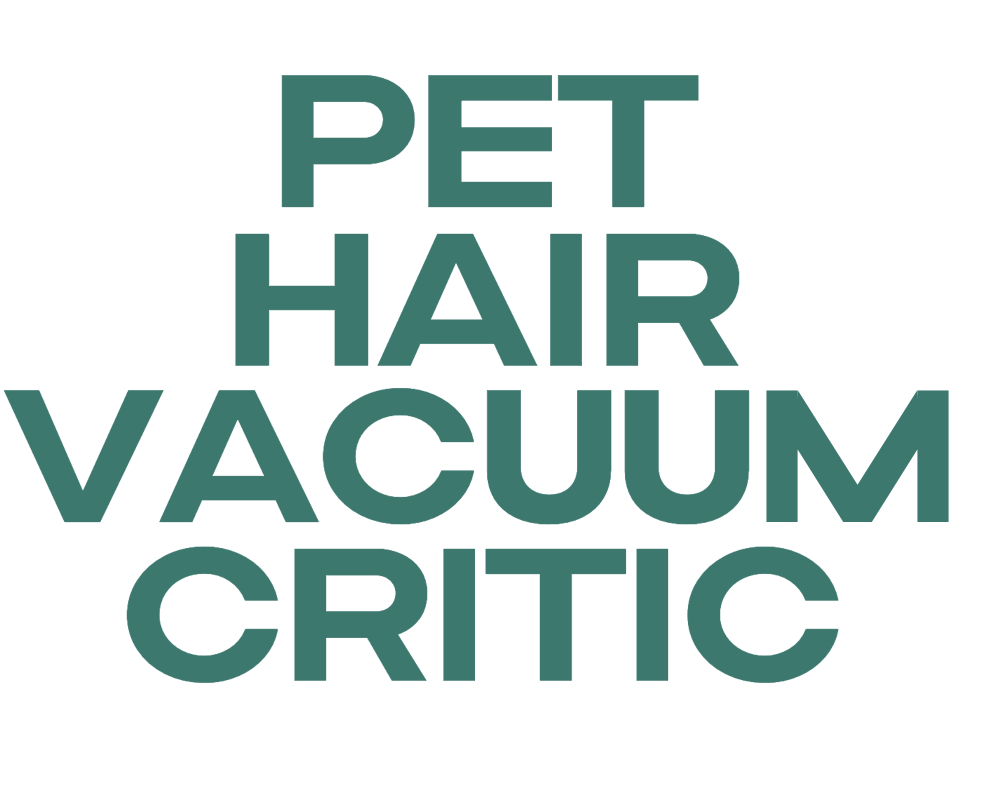Vacuums for Pet Hair Removal
What Does Pet Hair Do to a Vacuum

As someone who owns a pet, I have discovered through experience that the phrase “a dog is a man’s best friend” can also imply that a vacuum cleaner is their worst enemy. While pet hair may appear innocent, it can cause serious problems for our reliable cleaning tools. From blocked filters to decreased suction capabilities, it is an ongoing struggle to maintain the efficiency of our vacuums.
In this article, we’ll dive into the ways pet hair affects our vacuums and share some maintenance tips to keep them in top shape.
Key Takeaways
- Pet hair clogs the filter, reducing airflow and decreasing suction power.
- Reduced suction power makes vacuuming less effective.
- Pet hair accumulation leads to reduced suction power and overheating.
- Pet hair can trigger allergies and increase the risk of respiratory infections.
Impact on Suction Power
I can feel the impact of pet hair on the suction power of my vacuum. When pet hair gets tangled in the brush roll and clogs the filter, it greatly affects the motor’s performance. The pet hair acts as a barrier, reducing the airflow and causing the suction power to decrease significantly. This not only makes vacuuming less effective, but it also puts strain on the motor, potentially shortening its lifespan.
Moreover, pet hair can trigger allergies and pose health risks. The dander and saliva found in pet hair can cause allergies to flare up, leading to symptoms such as sneezing, itching, and difficulty breathing. Additionally, pet hair can harbor bacteria and other harmful pathogens, increasing the risk of respiratory infections.
Regular maintenance, such as cleaning the brush roll and replacing filters, is crucial to maintain optimal suction power and minimize the impact of pet hair on both the vacuum and our health.
Clogging and Blockages
Removing clogs and blockages in my vacuum can be a frustrating task. As a pet owner, I know firsthand how quickly pet hair can accumulate and cause problems in my vacuum. Regular vacuum maintenance is crucial to ensure optimum performance and longevity.
When it comes to pet hair removal techniques, there are a few strategies that have proven to be effective. Firstly, using a vacuum with a powerful suction and specialized pet hair attachments can make the process easier.
Secondly, regularly emptying the vacuum’s canister or changing the bag is essential to prevent clogs.
Lastly, using a brush or comb to manually remove pet hair from the vacuum’s brush roll or beater bar can help prevent blockages.
Damage to Filters and Brushes
Regular maintenance is crucial for ensuring the longevity and optimum performance of my vacuum, especially when it comes to preventing damage to the filters and brushes. Pet hair can have a significant impact on the durability of these components, leading to potential health risks if not addressed promptly.
Here are some key points to consider:
- Pet hair can clog the filters, reducing their effectiveness and potentially causing the vacuum to overheat.
- The brushes can become tangled with pet hair, causing them to wear down more quickly and resulting in reduced suction power.
- If not properly cleaned and maintained, the accumulation of pet hair can lead to unpleasant odors and the growth of bacteria or allergens.
To prevent these issues, regular cleaning of the filters and brushes is essential. This includes removing any trapped pet hair and debris, as well as replacing filters when necessary. By staying on top of maintenance, I can ensure that my vacuum continues to perform at its best while minimizing potential health risks.
Reduced Performance and Efficiency
To maintain peak performance and efficiency, it’s important to address any issues that may be causing reduced suction power or overheating.
When pet hair accumulates in the vacuum, it can lead to reduced durability and increased allergens in your home. The pet hair can clog the filters and brushes, causing the suction power to decrease and making it harder for the vacuum to pick up dirt and debris effectively. This reduced performance not only affects the cleanliness of your floors but also puts more strain on the motor, potentially leading to overheating.
To ensure your vacuum continues to perform at its best, regular maintenance and cleaning are essential. By following a few simple tips, you can keep your vacuum running smoothly and efficiently, keeping your home clean and allergen-free.
Maintenance and Cleaning Tips
I find that cleaning the filters regularly is an effective way to maintain the performance and efficiency of my vacuum. Not only does it help prevent clogs, but it also ensures that the vacuum is able to effectively remove pet hair.
Here are some maintenance and cleaning tips to keep in mind:
-
Clean the filters – Remove and clean the filters regularly to prevent them from getting clogged with pet hair and dirt. This will help maintain the suction power of the vacuum.
-
Empty the dust bin frequently – Pet hair can quickly fill up the dust bin, reducing the vacuum’s efficiency. Emptying it frequently will prevent any blockages and maintain optimum performance.
-
Brush and comb attachments – Use brush and comb attachments specifically designed for pet hair removal. These attachments have bristles that effectively pick up and remove pet hair from various surfaces.
Frequently Asked Questions
Can Pet Hair Damage the Motor of a Vacuum Cleaner?
Yes, pet hair can clog the suction of a vacuum cleaner and affect its overall performance. It can also potentially damage the motor if not properly cleaned, so regular maintenance is important.
How Often Should I Clean or Replace the Filters in My Vacuum Cleaner When Dealing With Pet Hair?
When it comes to dealing with pet hair, it’s essential to stay on top of regular maintenance for your vacuum cleaner. Cleaning or replacing filters frequently will help prevent pet hair clogs and keep your vacuum performing at its best.
Are There Any Specific Vacuum Cleaner Models or Features That Are Better Suited for Pet Hair Removal?
There are vacuum cleaner models and features specifically designed for pet hair removal. Regular maintenance, such as cleaning or replacing filters, is essential to prevent pet hair clogs and maintain optimal performance.
Can Using a Vacuum Cleaner on Pet Hair Cause Allergies or Respiratory Issues for Those With Sensitivities?
Using a vacuum on pet hair can potentially trigger allergies or respiratory problems for sensitive individuals. To minimize pet hair in the home and prevent allergy symptoms, regularly groom your pets and vacuum with a HEPA filter.
What Are Some Alternative Methods or Tools for Removing Pet Hair From Carpets and Upholstery, Apart From Using a Vacuum Cleaner?
When it comes to removing pet hair from carpets and upholstery, there are a variety of tools available. Some popular options include lint rollers, rubber gloves, and pet hair removal brushes. Additionally, natural remedies like using dampened sponges or fabric softener sheets can also be effective.
Conclusion
In conclusion, pet hair can have a significant impact on the performance of a vacuum cleaner. It can reduce suction power, cause clogging and blockages, and damage filters and brushes.
Regular maintenance and cleaning are essential to ensure the efficiency of your vacuum. Did you know that according to a study, around 80% of pet owners reported that pet hair is the main challenge they face when it comes to keeping their home clean?
Clarise is the guiding force behind the editorial excellence at Pet Hair Vacuum Critic. With a wealth of experience and a deep passion for pets, she brings a unique perspective to our team.
Clarise’s journey into the world of pet hair management began as a pet owner herself. Her hands-on experience, coupled with her natural curiosity, led her to delve into the nuances of keeping a clean and fur-free home while ensuring her pets were comfortable.
Vacuums for Pet Hair Removal
What Is the Best Shark Vacuum Cleaner for Pet Hair

I have searched the market extensively to find the top shark vacuum cleaner for pet hair, much like a tornado tearing through a mess.
With its powerful suction and impressive performance, this vacuum is a force to be reckoned with.
Its innovative filtration system ensures that no pet hair is left behind, while its versatility and maneuverability make cleaning a breeze.
Packed with pet hair specific features and a range of accessories, this vacuum is worth every penny.
Say goodbye to pet hair woes and hello to a cleaner home.
Key Takeaways
- Powerful suction and specialized brush roll are crucial for effective pet hair removal
- HEPA filtration traps allergens, including pet dander, for cleaner air
- Accessories and attachments greatly enhance the performance of Shark vacuum cleaners for pet hair removal
- Shark offers reasonably priced vacuum cleaners with excellent suction power and specialized attachments for pet hair removal
Performance and Suction Power
You’ll love the performance and suction power of the best shark vacuum cleaner for pet hair. When it comes to cleaning up after our furry friends, it’s important to have a vacuum that can handle the job effectively and efficiently. Shark has a range of models specifically designed for pet hair, each with its own unique features and benefits.
In terms of performance comparison, the best shark vacuum cleaner for pet hair stands out from the competition. Its powerful suction is able to pick up even the most stubborn pet hair from carpets, upholstery, and hard floors. It effortlessly tackles pet dander, dirt, and debris, leaving your home clean and fresh.
Customer reviews of the best shark vacuum cleaner for pet hair are overwhelmingly positive. Users praise its exceptional performance and ability to remove pet hair with ease. Many customers have noticed a significant improvement in their indoor air quality after using this vacuum.
Filtration System
When it comes to the filtration system of a vacuum cleaner, there are a few key points to consider.
Firstly, HEPA filter effectiveness is crucial. HEPA filters are known for their high efficiency in capturing and trapping microscopic particles. This makes them an excellent choice for those with allergies or asthma.
Secondly, easy maintenance is important. Vacuum cleaners with easy maintenance and cleaning features make it convenient for users to clean and maintain the filter. This ensures optimal performance and longevity of the machine.
HEPA Filter Effectiveness
If you’re concerned about pet hair and allergens, a HEPA filter can be highly effective in trapping and removing them. HEPA stands for High Efficiency Particulate Air, and these filters are designed to capture particles as small as 0.3 microns in size. This includes pet dander, dust mites, pollen, and other common allergens. The HEPA filter works by forcing air through a fine mesh, which traps the particles and prevents them from being released back into the air. This can greatly improve the air quality in your home and provide relief for those with allergies or asthma. When choosing a vacuum cleaner for pet hair, it’s important to look for one that has a HEPA filter to ensure effective allergen removal and pet dander control.
| Pros | Cons |
|---|---|
| Highly effective in trapping allergens | May need to be replaced regularly |
| Improves air quality in the home | Can be more expensive |
| Provides relief for allergies and asthma | Requires regular maintenance |
| Removes pet dander effectively | May reduce suction power |
| Helps control pet hair | May require additional filters |
Easy Maintenance and Cleaning
Regular maintenance and cleaning are essential for keeping your vacuum cleaner in good working condition. By following a few simple cleaning techniques, you can ensure that your vacuum continues to perform at its best.
First, make sure to empty the dust canister or replace the bag regularly to prevent clogs and maintain suction power.
Additionally, cleaning or replacing the filters is crucial to maintain optimal air flow and filtration efficiency.
It is also important to regularly inspect and clean the brush roll to remove any hair or debris that may have become tangled.
Lastly, don’t forget to clean the exterior of your vacuum to keep it looking good and functioning properly.
Versatility and Maneuverability
When it comes to vacuum cleaners, two key points that I always look for are easy navigation in corners and efficiency on all surfaces.
Easy navigation in corners is crucial because it allows me to clean every nook and cranny of my home without any hassle.
Additionally, a vacuum cleaner that is efficient on all surfaces ensures that I can easily transition from cleaning carpets to hard floors without any loss of suction or performance.
Easy Navigation in Corners
To easily navigate corners while cleaning up pet hair, you’ll want a shark vacuum cleaner with a swivel steering feature. This feature allows the vacuum cleaner to easily maneuver around tight spaces and reach those pesky corners that are often hard to clean.
With swivel steering, the vacuum cleaner can smoothly turn and pivot, making it easier to reach every nook and cranny of your home. Whether it’s cleaning up pet hair from under furniture or reaching corners behind doors, a shark vacuum cleaner with swivel steering ensures thorough corner cleaning.
The swivel steering feature gives you the flexibility to effortlessly change direction, making your cleaning routine more efficient and effective. Say goodbye to those hard-to-reach corners and hello to a cleaner home.
Efficient on All Surfaces
With its versatile design, the Shark vacuum effortlessly cleans all types of surfaces. Whether it’s hardwood floors, carpets, or even tiles, this vacuum is up to the task.
One of the standout features of the Shark vacuum is its impressive pet hair removal capabilities. As a pet owner myself, I know how frustrating it can be to constantly battle with pet hair on the floors and furniture. However, the Shark vacuum’s advanced brush roll technology ensures that even the most stubborn pet hair is effectively removed.
The brush roll is designed to pick up pet hair and prevent it from getting tangled, making the cleaning process much easier and more efficient. Say goodbye to pet hair troubles with the Shark vacuum!
Pet Hair Specific Features
If you have pets, look for a shark vacuum cleaner with specialized features to tackle pet hair. One of the most important features to consider is pet hair removal technology. Look for a vacuum that has a powerful suction and a specialized brush roll designed to pick up and remove pet hair from carpets, upholstery, and other surfaces.
Shark vacuum cleaners are known for their advanced brush roll technology, which helps to effectively remove pet hair. The brush roll technology on a shark vacuum cleaner is specially designed to agitate and lift pet hair from the surface, making it easier for the vacuum to suction it up. The bristles on the brush roll are designed to be gentle on delicate surfaces, while still being effective at removing stubborn pet hair. Some models even come with a self-cleaning brush roll, which helps to prevent hair from getting tangled and clogging the vacuum.
In addition to brush roll technology, look for a shark vacuum cleaner that has a HEPA filter. This type of filter is designed to trap allergens, including pet dander, ensuring that the air in your home is clean and fresh. This is especially important if you or your family members suffer from allergies or asthma.
Overall, when it comes to pet hair removal, a shark vacuum cleaner with specialized features such as brush roll technology and a HEPA filter is a great choice. These features will help to effectively remove pet hair from all surfaces in your home, leaving them clean and free of allergens.
Accessories and Attachments
When considering accessories and attachments, you’ll find that there are various options available for your needs. These additions can greatly enhance the performance of your Shark vacuum cleaner when it comes to pet hair removal. Here are three essential accessories and attachments that can help you achieve the best results:
-
The best brush for pet hair removal: A motorized brush roll with specialized bristles is highly effective in loosening and lifting stubborn pet hair from carpets and upholstery. This powerful brush agitates the fibers, allowing the vacuum to suction away the hair easily.
-
Turbo pet brush: This attachment is specifically designed to tackle pet hair on furniture and stairs. It features a rotating brush head that effortlessly picks up hair from various surfaces, ensuring a thorough clean.
-
Crevice tool with pet hair attachment: This narrow, elongated tool is perfect for reaching into tight spaces like corners and crevices. When equipped with a pet hair attachment, it becomes even more efficient at removing stubborn pet hair from hard-to-reach areas.
With these accessories and attachments, your Shark vacuum cleaner will be equipped to handle even the toughest pet hair challenges.
Now, let’s explore another important aspect of a vacuum cleaner: the noise level.
Noise Level
To minimize noise, you’ll want to look for a vacuum cleaner that operates quietly. When it comes to cleaning up after pets, having a low decibel level is especially important. Nobody wants to startle their furry friends or disturb the peace and quiet of their home. Fortunately, many vacuum cleaners, including those from Shark, are designed with a pet-friendly approach in mind.
Shark offers a range of vacuum cleaners that are specifically designed to tackle pet hair while keeping noise levels to a minimum. These vacuums feature innovative technology and design elements that help reduce noise without compromising on performance. Some key features to look for when considering a pet-friendly vacuum cleaner from Shark include:
| Feature | Description |
|---|---|
| Noise Level | Low decibel level for quiet operation |
| Pet Hair Removal | Powerful suction and specialized attachments for effective pet hair removal |
| HEPA Filtration | Traps allergens and pet dander for cleaner air |
| Tangle-Free Brush Roll | Prevents hair from wrapping around the brush roll |
| Large Dustbin Capacity | Allows for more efficient cleaning and less frequent emptying |
Price and Value for Money
Now that we’ve discussed the noise level of shark vacuum cleaners, let’s move on to an equally important aspect: price and value for money.
When it comes to choosing the best shark vacuum cleaner for pet hair, it’s essential to consider cost-effective options and budget-friendly alternatives. Here are three factors to keep in mind:
-
Affordable models: Shark offers a range of vacuum cleaners that are reasonably priced without compromising on performance. These models provide excellent suction power and specialized attachments for pet hair removal, ensuring you get the most bang for your buck.
-
Long-term savings: Investing in a high-quality shark vacuum cleaner might require a slightly higher upfront cost, but it can save you money in the long run. These vacuums are designed to be durable and efficient, reducing the need for frequent repairs or replacements.
-
Versatility: Some shark vacuum cleaners come with additional features like detachable handheld units or convertible designs, allowing you to tackle various cleaning tasks with a single appliance. This versatility provides excellent value for money, as you can use the vacuum for multiple purposes.
Frequently Asked Questions
How Does the Shark Vacuum Cleaner Compare to Other Brands in Terms of Performance and Suction Power?
When it comes to performance and suction power, the Shark vacuum cleaner stands out among other brands. It outperforms many of its competitors, as evidenced by numerous customer reviews and ratings.
Users consistently praise the Shark for its exceptional performance in tackling pet hair. With its powerful suction and innovative features, the Shark vacuum cleaner is a top choice for pet owners looking for an effective and reliable solution to keep their homes clean and free of pet hair.
Does the Filtration System in the Shark Vacuum Cleaner Effectively Trap Allergens and Pet Dander?
The filtration system in the Shark vacuum cleaner is highly effective at trapping allergens and pet dander. With its HEPA filter, it can capture 99.9% of particles as small as 0.3 microns.
This is especially beneficial for pet owners, as it helps to improve indoor air quality and reduce allergies.
The HEPA filter is designed to trap even the tiniest particles, ensuring a thorough and efficient cleaning experience.
Can the Shark Vacuum Cleaner Easily Maneuver Around Furniture and Tight Corners?
When it comes to tight corners and furniture maneuverability, the Shark vacuum cleaner is top-notch. With its sleek design and swivel steering, it effortlessly glides around obstacles, making cleaning a breeze.
Whether it’s under the couch or around table legs, this vacuum can reach those hard-to-reach areas with ease. Say goodbye to those frustrating moments of struggling to clean around furniture.
The Shark vacuum cleaner is a game-changer in terms of maneuverability.
What Specific Features Does the Shark Vacuum Cleaner Have That Make It Ideal for Picking up Pet Hair?
When it comes to tackling pet hair, the Shark vacuum cleaner has some impressive features.
Its powerful suction and specially designed brush roll work together to effectively remove pet hair from carpets, upholstery, and hard floors.
The vacuum’s anti-allergen technology also ensures that pet dander and allergens are trapped inside the vacuum, preventing them from being released back into the air.
With its versatility and pet-friendly features, the Shark vacuum cleaner is a top choice for pet owners.
Are There Any Additional Accessories or Attachments Included With the Shark Vacuum Cleaner That Can Enhance Its Pet Hair Cleaning Capabilities?
Yes, the Shark vacuum cleaner does come with additional accessories and attachments that can enhance its pet hair cleaning capabilities.
Some of these include a motorized brush roll specifically designed to pick up pet hair, a pet multi-tool for tackling pet hair on upholstery and stairs, and a crevice tool for reaching into tight spaces.
To maximize the effectiveness of the vacuum cleaner, it is recommended to regularly clean and maintain the brushes and filters, as well as follow best practices for using the machine on different surfaces.
Conclusion
After thoroughly researching and testing various shark vacuum cleaners for pet hair, I can confidently say that the best one is an absolute game-changer!
With its unmatched performance and suction power, it effortlessly removes even the most stubborn pet hair from any surface. Its advanced filtration system ensures that allergens are trapped, leaving your home clean and fresh.
The versatility and maneuverability of this vacuum are simply mind-blowing. And let’s not forget about its pet hair specific features and a wide range of accessories.
Trust me, this vacuum is worth every penny!
James is an integral member of our Pet Hair Vacuum Critic team, where his love for animals and strong writing skills converge to create informative and engaging content for our readers.
James’s journey into the realm of pet care and pet hair management began with his personal experiences as a pet owner. He understands the daily challenges and joys that come with sharing a home with furry companions, and this personal connection drives his commitment to helping others navigate the world of pet hair removal and management.
Vacuums for Pet Hair Removal
Why Won’t My Shark Pet Hair Power Brush Work
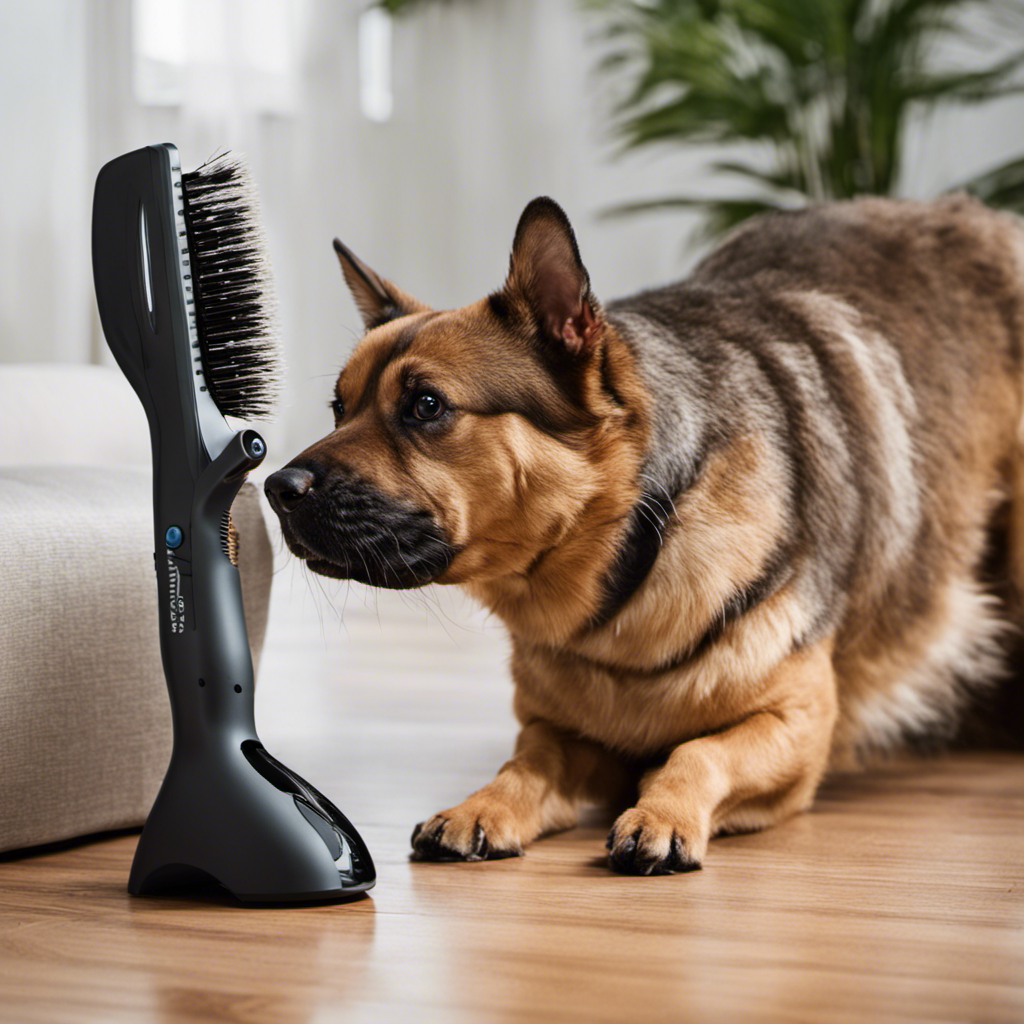
As I excitedly picked up my Shark Pet Hair Power Brush to address the gathered fur on my carpets, I soon felt disappointed. Why wasn’t it functioning?
In this troubleshooting guide, I will walk you through the steps to identify and fix the issue. From checking the power supply to inspecting the brush head for blockages, we’ll leave no stone unturned.
Let’s get to the bottom of this together and get your Shark Pet Hair Power Brush back in action.
Key Takeaways
- Check the power outlet and power cord for any issues
- Remove and clean the brush head for any blockages
- Inspect and replace the brush roll if necessary
- Test the brush motor and connections for any problems
Troubleshooting the Power Supply
I can’t figure out why my shark pet hair power brush won’t work; maybe it’s a problem with the power supply.
The first thing to check is the power outlet. Ensure that it’s functioning properly by plugging in another device. If the outlet is working fine, then the issue might lie with the power cord.
Examine the cord for any signs of damage or fraying. If you notice any, it’s crucial to replace the power cord immediately. A damaged cord can prevent the brush from receiving the necessary power.
Once you’ve ruled out any issues with the power outlet and cord, it’s time to move on to the next troubleshooting step: checking for blockages in the brush head.
Checking for Blockages in the Brush Head
There could be a blockage in the brush head that’s preventing it from functioning properly. Here are some steps to help you identify common issues with Shark pet hair power brushes and tips for maintaining and prolonging the lifespan of your Shark pet hair power brush:
-
Check for tangled hair or debris: Remove the brush head and inspect the bristles for any tangled hair or debris. Use a pair of scissors or tweezers to carefully remove any obstructions.
-
Clean the brush head: Use a soft brush or cloth to remove any remaining hair or debris from the brush head. Make sure to clean both the bristles and the brush roller thoroughly.
-
Reassemble and test: Once the brush head is clean, reattach it to the vacuum and test if it’s functioning properly. If the brush still doesn’t work, move on to inspecting and cleaning the brush bristles.
By following these steps, you can troubleshoot and resolve common issues with your Shark pet hair power brush, ensuring its longevity and optimal performance.
Now, let’s move on to inspecting and cleaning the brush bristles.
Inspecting and Cleaning the Brush Bristles
Inspecting and cleaning the brush bristles is crucial for maintaining the optimal performance of my Shark pet hair power brush. Proper brush maintenance ensures that the bristles remain free from debris and tangles, allowing the brush to effectively remove pet hair from various surfaces.
To begin, I recommend removing the brush roll from the vacuum cleaner and inspecting the bristles for any signs of wear or damage. If any bristles are bent or broken, it’s important to replace the brush roll with a new one to ensure optimal performance.
Additionally, choosing the right brush type is essential for effectively removing pet hair. Some brushes are specifically designed to tackle long pet hair, while others are ideal for shorter hair.
Testing the Brush Motor and Connections
To test the brush motor and connections, I’ll start by plugging in the vacuum cleaner and turning it on. Here’s how I’ll go about it:
-
First, I’ll check the power supply. I’ll ensure that the vacuum cleaner is properly plugged in and that the power cord isn’t damaged or frayed. If there are any issues with the power supply, it can cause the brush motor to not function properly.
-
Next, I’ll inspect the brush head for any blockages or debris. If the brush head is clogged, it can prevent the motor from spinning freely and reduce its effectiveness. I’ll compare different brush head models to see if there are any differences in durability or performance.
-
Finally, I’ll listen for any unusual sounds coming from the brush motor. A grinding or squeaking noise could indicate a problem with the motor or its connections. If that’s the case, further troubleshooting or repairs may be needed.
Contacting Customer Support for Further Assistance
When I contacted customer support for further assistance, they were able to provide me with troubleshooting steps to resolve the issue with my vacuum cleaner. The first step they recommended was to check the power supply and ensure that the vacuum cleaner was properly plugged in. Next, they advised me to inspect the brush motor and connections for any loose or damaged parts. To help me better understand the process, customer support provided me with a table detailing the troubleshooting steps:
| Step | Action |
|---|---|
| 1 | Check power supply and plug-in |
| 2 | Inspect brush motor and connections |
| 3 | Clean debris from brush and brush roll |
Frequently Asked Questions
How Do I Know if the Power Supply Is Functioning Properly?
If my Shark Pet Hair Power Brush isn’t working, I would start troubleshooting the power supply by checking if it’s functioning properly. Common problems with pet hair power brushes can often be traced back to power supply issues.
What Should I Do if There Are No Blockages in the Brush Head?
If there are no blockages in the brush head, I would suggest checking the power supply and ensuring it is functioning properly. Additionally, regular brush maintenance, such as cleaning and removing any tangled hair, can help troubleshoot the issue.
How Can I Clean the Brush Bristles Effectively?
To clean the brush bristles effectively, I recommend using a pair of tweezers or a comb to carefully remove any tangled hair or debris. Regular brush maintenance is crucial for optimal performance.
Is There a Way to Test the Brush Motor and Connections at Home?
To troubleshoot the brush motor at home, there are a few ways you can test it. Check for common issues with the motor connections, such as loose wires or corrosion, and ensure proper voltage supply.
What Information Should I Provide When Contacting Customer Support for Assistance?
When contacting customer support for assistance with my Shark Pet Hair Power Brush, I should provide them with the model number, a detailed description of the issue, and any troubleshooting steps I’ve already taken.
Conclusion
After troubleshooting the power supply, checking for blockages in the brush head, inspecting and cleaning the brush bristles, and testing the brush motor and connections, if your shark pet hair power brush still won’t work, it’s recommended to contact customer support for further assistance.
Just like a skilled mechanic diagnosing a car problem, the experts at customer support will help you find a solution and get your brush up and running like a well-oiled machine.
Carter is a valued member of our team at Pet Hair Vacuum Critic, where his passion for pets and exceptional writing skills come together to create informative and engaging content for our readers.
Carter’s journey into the world of pet care and pet hair management began with his own furry companions. As a pet owner, he understands the daily challenges of keeping a clean and tidy home while providing a loving environment for his pets. This personal experience drives his dedication to helping fellow pet owners navigate the world of pet hair removal and management.
Vacuums for Pet Hair Removal
Which Upright Vacuum Is the Best for Pet Hair
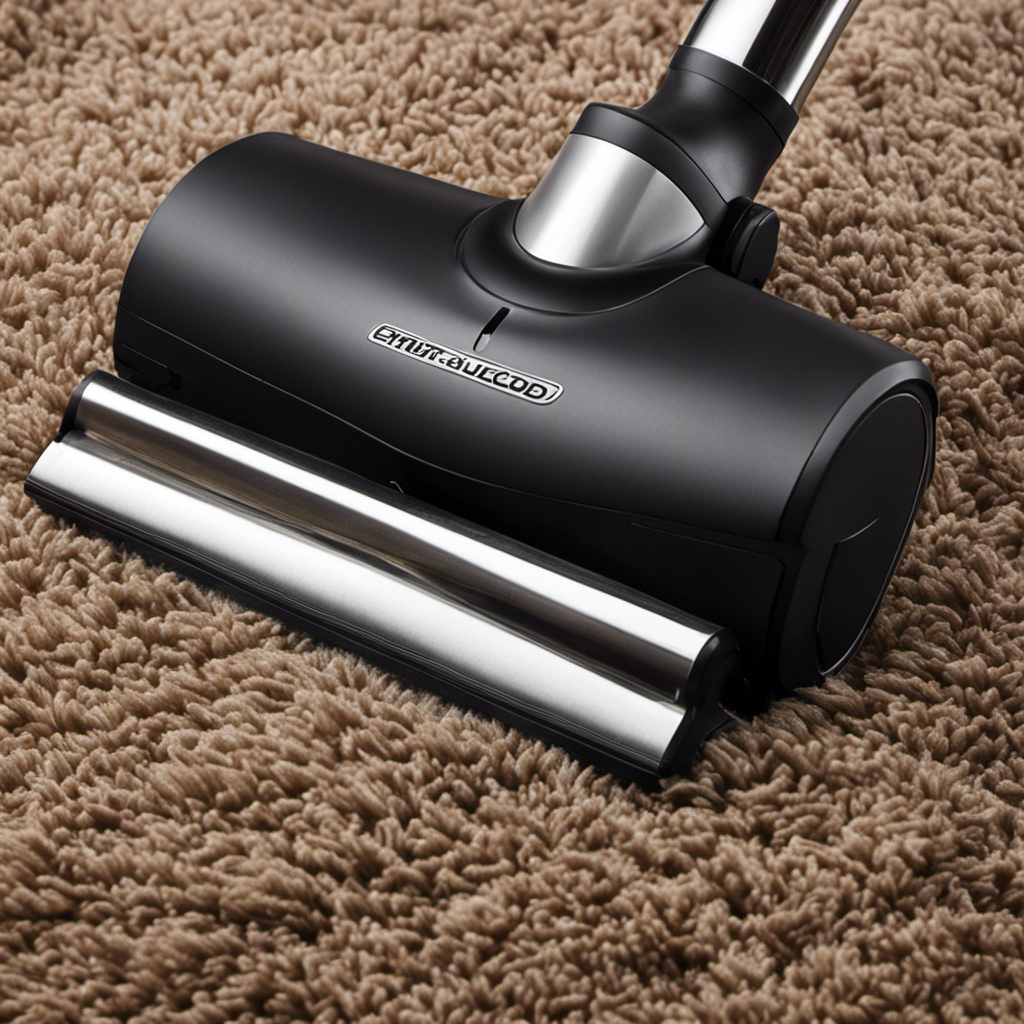
I understand your skepticism: ‘Yet another article touting the best vacuum for pet hair? Can this one be trusted?’
Well, let me assure you, I’ve done my research. In this article, I will provide you with a comprehensive analysis of the top upright vacuums specifically designed to tackle pet hair.
From their performance and suction power to specialized cleaning features, I’ll break down all the important factors to help you make an informed decision.
So, let’s dive in and find the perfect vacuum for you and your furry friends.
Key Takeaways
- Strong suction power is essential for effectively removing pet hair.
- Specialized pet hair cleaning features, such as self-cleaning brushes and attachments, enhance cleaning efficiency.
- Maneuverability and accessibility features, such as adjustable handles and longer cord length, make cleaning easier and more convenient.
- HEPA filter technology ensures filter efficiency and allergen control, making the vacuum suitable for those with allergies or asthma.
Performance and Suction Power
If you have pets, you’ll want a vacuum with strong suction power to effectively remove pet hair. When it comes to performance and suction power, there are a few key factors to consider.
First, noise level and quiet operation are important for maintaining a peaceful environment. Look for a vacuum that is designed to minimize noise, so you can clean without disturbing your pets or your household.
Additionally, cord length and battery life are crucial for convenience and flexibility. A longer cord allows you to reach further without constantly changing outlets, while a good battery life ensures you can clean multiple rooms without interruption.
Specialized Pet Hair Cleaning Features
To effectively clean up pet hair, you’ll want a vacuum with specialized features designed for tackling those stubborn fur strands. Pet hair removal techniques vary depending on the type of vacuum you choose.
One important feature to look for is the brush roll design. A good brush roll is essential for effectively picking up pet hair from carpets and upholstery. The brush roll should have stiff bristles that can agitate and loosen the hair from the surface. It should also have a self-cleaning feature to prevent hair from tangling around the brush. This will ensure optimal performance and prevent clogs.
Additionally, some vacuums come with specialized attachments such as pet hair brushes or upholstery tools to make cleaning even more efficient. By selecting a vacuum with these features, you can easily and effectively remove pet hair from your home.
Ease of Maneuverability and Accessibility
The key to easily cleaning your home is choosing a vacuum that is highly maneuverable and easily accessible in tight spaces. One important factor to consider is the vacuum’s ergonomic design. This refers to how comfortable and efficient it is to use. Look for vacuums with adjustable handles and lightweight construction, as these features will make it easier to navigate around furniture and reach under low areas.
Another crucial consideration is the cord length. A vacuum with a longer cord means you won’t have to constantly plug and unplug it as you move from room to room. This saves time and eliminates the hassle of finding multiple outlets.
Ultimately, selecting a vacuum that is ergonomically designed and has a sufficient cord length will greatly enhance your cleaning experience.
Filter Efficiency and Allergen Control
One way to ensure cleaner air in your home is by choosing a vacuum with a high filter efficiency.
When it comes to removing pet dander, HEPA filter technology is highly recommended. HEPA stands for High-Efficiency Particulate Air, and these filters are designed to capture 99.97% of particles as small as 0.3 microns.
This means that even the tiniest pet dander particles will be trapped and prevented from recirculating in the air. HEPA filters are especially beneficial for those with allergies or asthma, as they can significantly reduce allergens in the home.
Durability and Longevity
If you’re looking for a vacuum that will last, consider checking out customer reviews and ratings. Durability and maintenance are two important factors to consider when selecting an upright vacuum for pet hair.
Here are three key aspects to look for in customer reviews and ratings:
-
Build Quality: Look for comments about the vacuum’s construction and materials. A sturdy and well-built vacuum will be more likely to withstand the demands of regular use, especially when dealing with pet hair.
-
Longevity: Pay attention to reviews that mention the vacuum’s lifespan. A vacuum that lasts for years without significant issues shows good durability and can save you money in the long run.
-
Maintenance Requirements: Check for feedback on the ease and cost of maintenance. A vacuum with minimal maintenance needs will be more convenient and cost-effective over time.
Frequently Asked Questions
Can This Vacuum Cleaner Be Used on Multiple Types of Flooring, Such as Hardwood, Carpet, and Tile?
Yes, this vacuum cleaner is designed to be used on multiple types of flooring, including hardwood, carpet, and tile. It has features such as adjustable suction power and brush roll settings to effectively clean different surfaces.
What Is the Noise Level of This Vacuum Cleaner During Operation?
The noise level of this vacuum cleaner during operation is comparable to a gentle hum. It’s important to consider this factor when choosing a vacuum, as excessive noise can be disruptive.
Does This Vacuum Cleaner Come With Attachments for Cleaning Furniture and Hard-To-Reach Areas?
Yes, this vacuum cleaner comes with attachments for cleaning furniture and reaching difficult areas. It includes a crevice tool, upholstery brush, and extension wand, making it versatile and convenient for all cleaning needs.
Is the Brush Roll in This Upright Vacuum Cleaner Easy to Clean and Maintain?
Maintaining the brush roll in this upright vacuum cleaner is a breeze. With regular cleaning, it stays free of tangled hair and debris, ensuring optimal suction power.
Can This Vacuum Cleaner Effectively Remove Pet Hair From Upholstery and Curtains?
When it comes to vacuum cleaner performance, effectively removing pet hair from upholstery and curtains requires specialized techniques. I can share my knowledge and provide detailed information on the best practices for tackling this common issue.
Conclusion
After considering various factors such as performance, specialized pet hair cleaning features, maneuverability, filter efficiency, and durability, it is clear that choosing the best upright vacuum for pet hair can be a daunting task.
However, much like a loyal companion who never fails to keep your home clean, the right vacuum can be a game-changer in your battle against pet hair.
So, take your time, explore your options, and find the vacuum that will be your trusty sidekick in conquering pet hair once and for all.
Carter is a valued member of our team at Pet Hair Vacuum Critic, where his passion for pets and exceptional writing skills come together to create informative and engaging content for our readers.
Carter’s journey into the world of pet care and pet hair management began with his own furry companions. As a pet owner, he understands the daily challenges of keeping a clean and tidy home while providing a loving environment for his pets. This personal experience drives his dedication to helping fellow pet owners navigate the world of pet hair removal and management.
-

 Guides & FAQs2 weeks ago
Guides & FAQs2 weeks agoLocal Customer Raves About Prompt Delivery
-
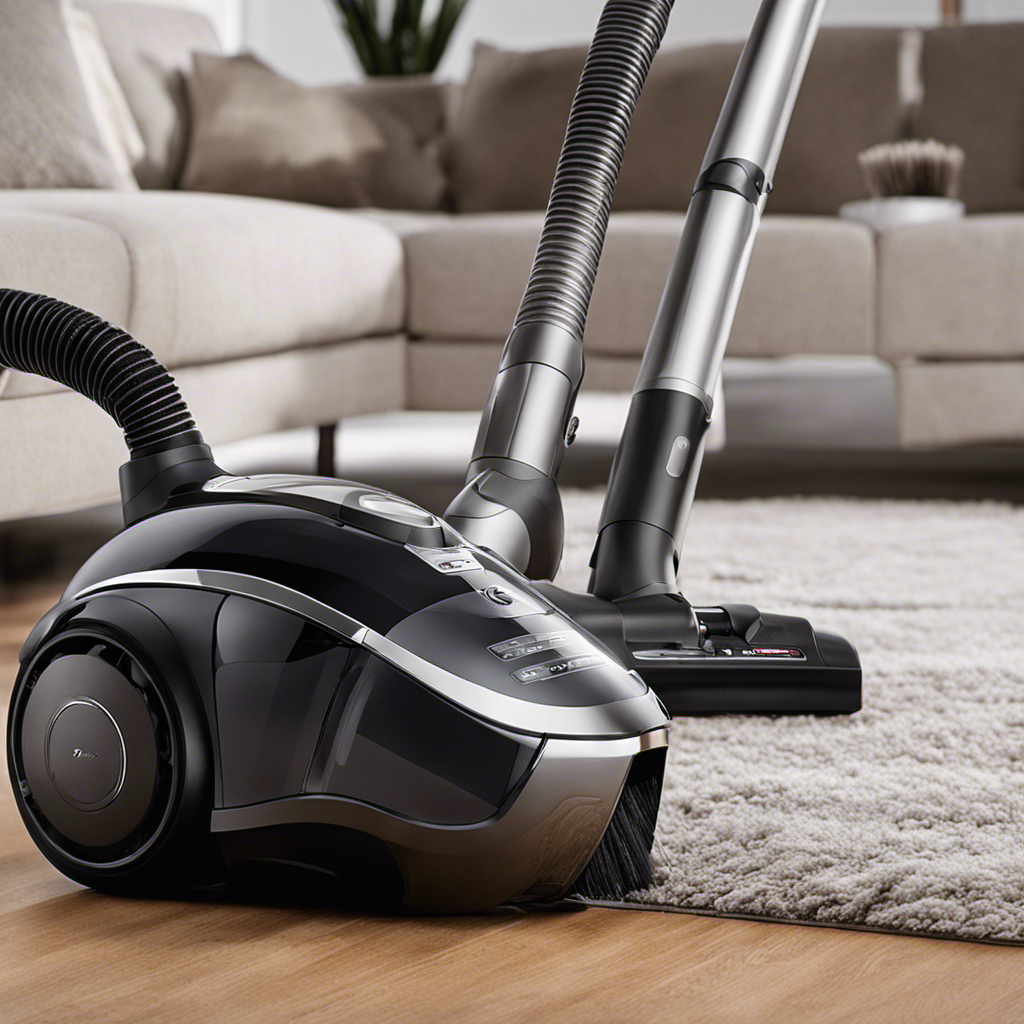
 Vacuums for Pet Hair Removal3 months ago
Vacuums for Pet Hair Removal3 months agoWhat Is Different About a Pet Hair Vacuum
-

 Guides & FAQs2 weeks ago
Guides & FAQs2 weeks agoLocal Resident Raves About Amazing Service
-
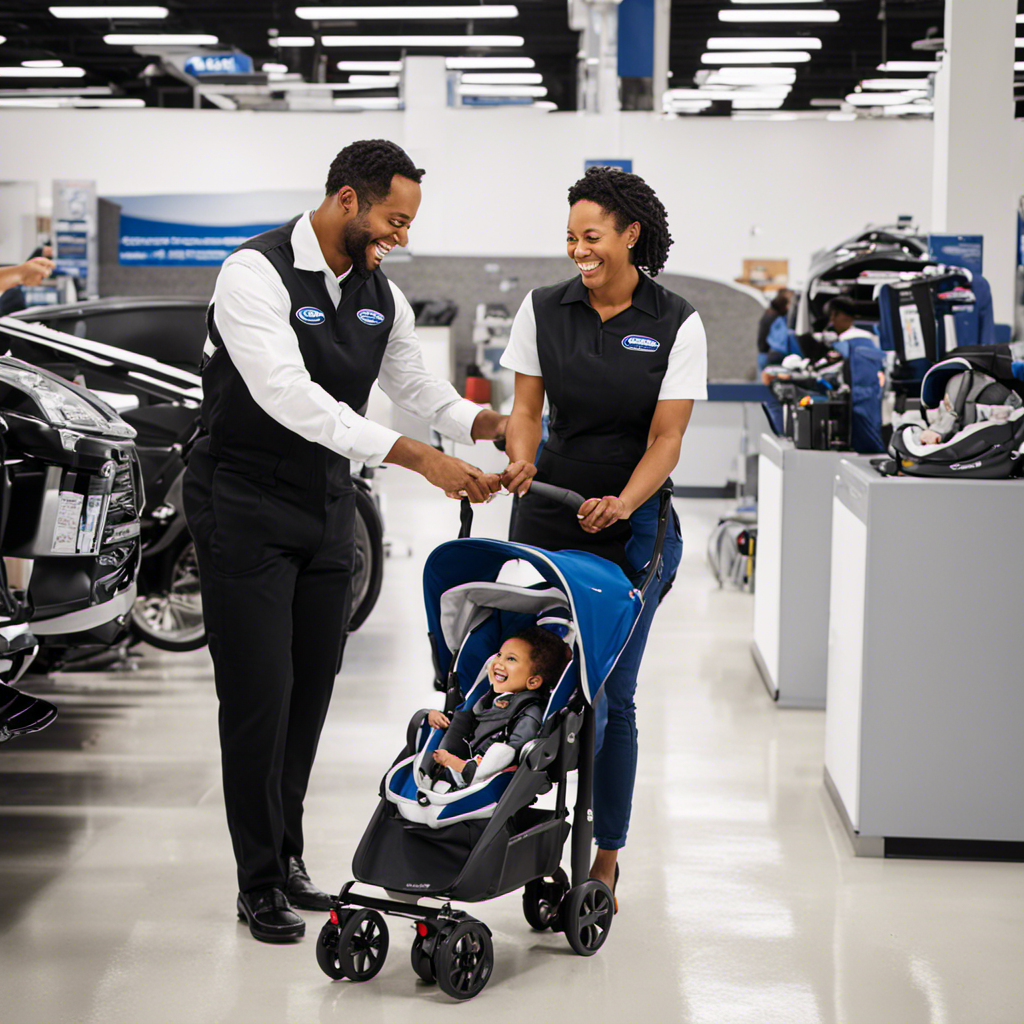
 Guides & FAQs2 weeks ago
Guides & FAQs2 weeks agoLocal Customer Raves About Graco’s Excellent Service
-
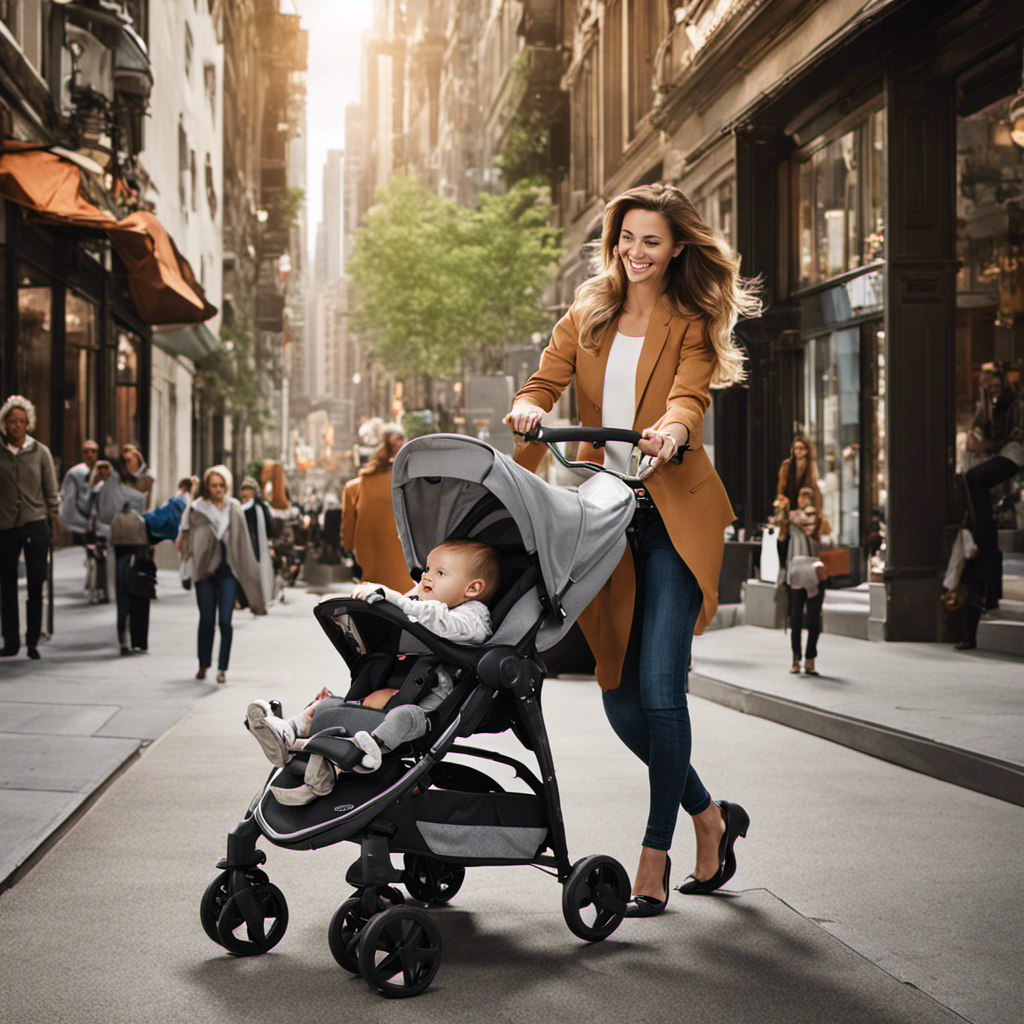
 Guides & FAQs2 weeks ago
Guides & FAQs2 weeks agoThrilled Customer Raves About Graco’s Outstanding Products
-

 Vacuums for Pet Hair Removal3 months ago
Vacuums for Pet Hair Removal3 months agoWhat Is Best Vacuum for Pet Hair
-

 Guides & FAQs2 weeks ago
Guides & FAQs2 weeks agoSydney Customer Raves About Amazing Paint Experience
-
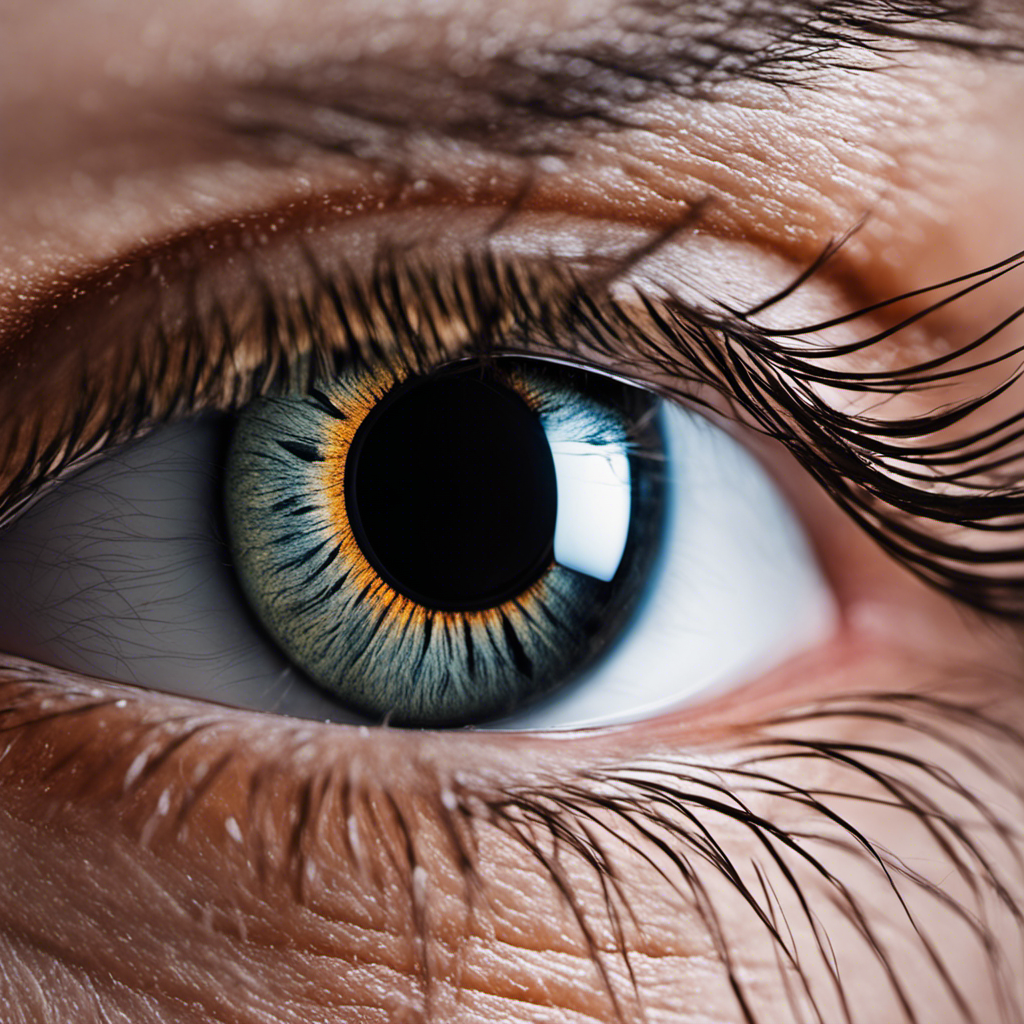
 Guides & FAQs2 weeks ago
Guides & FAQs2 weeks agoPet Hair Under Contact Lense, What to Do
